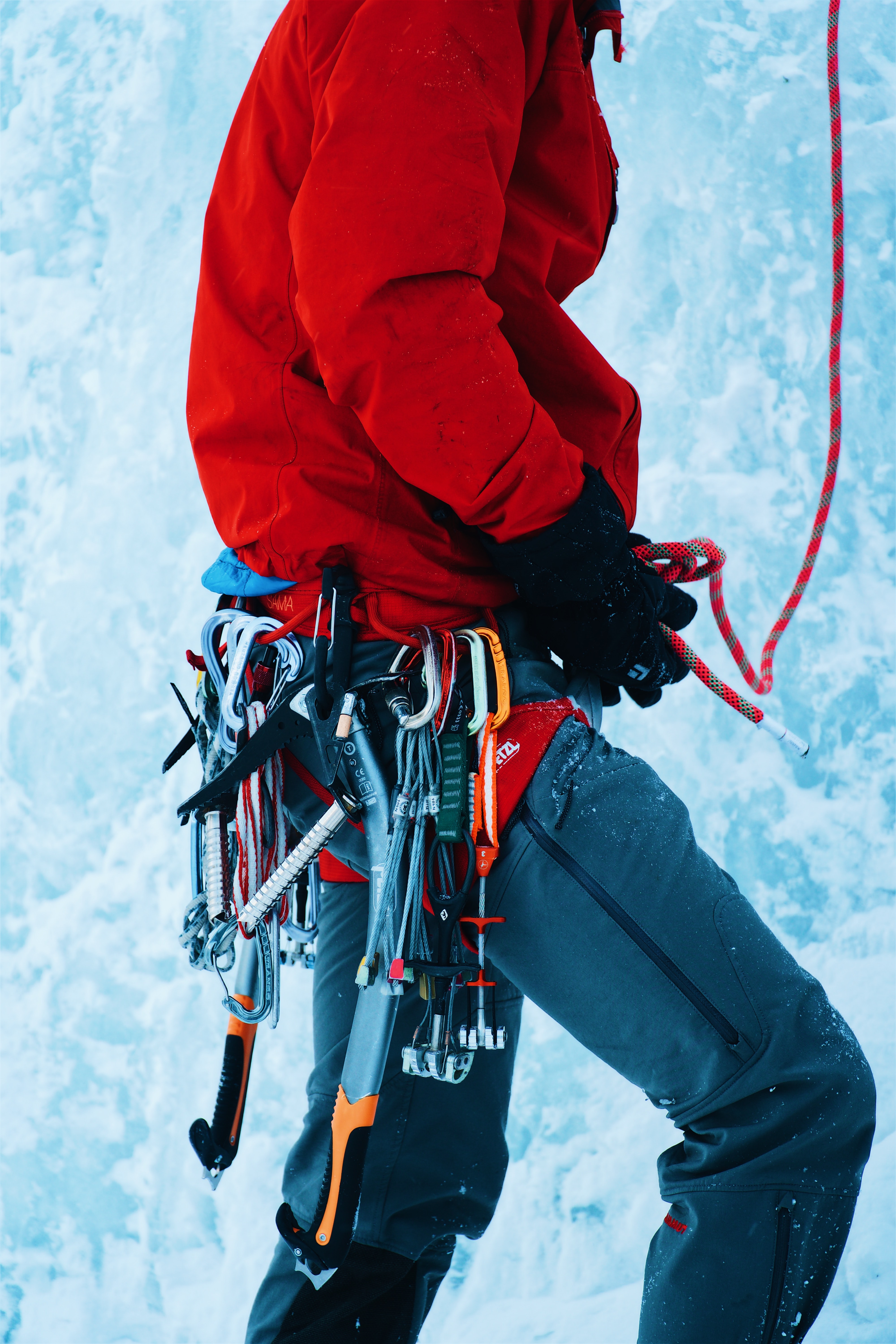



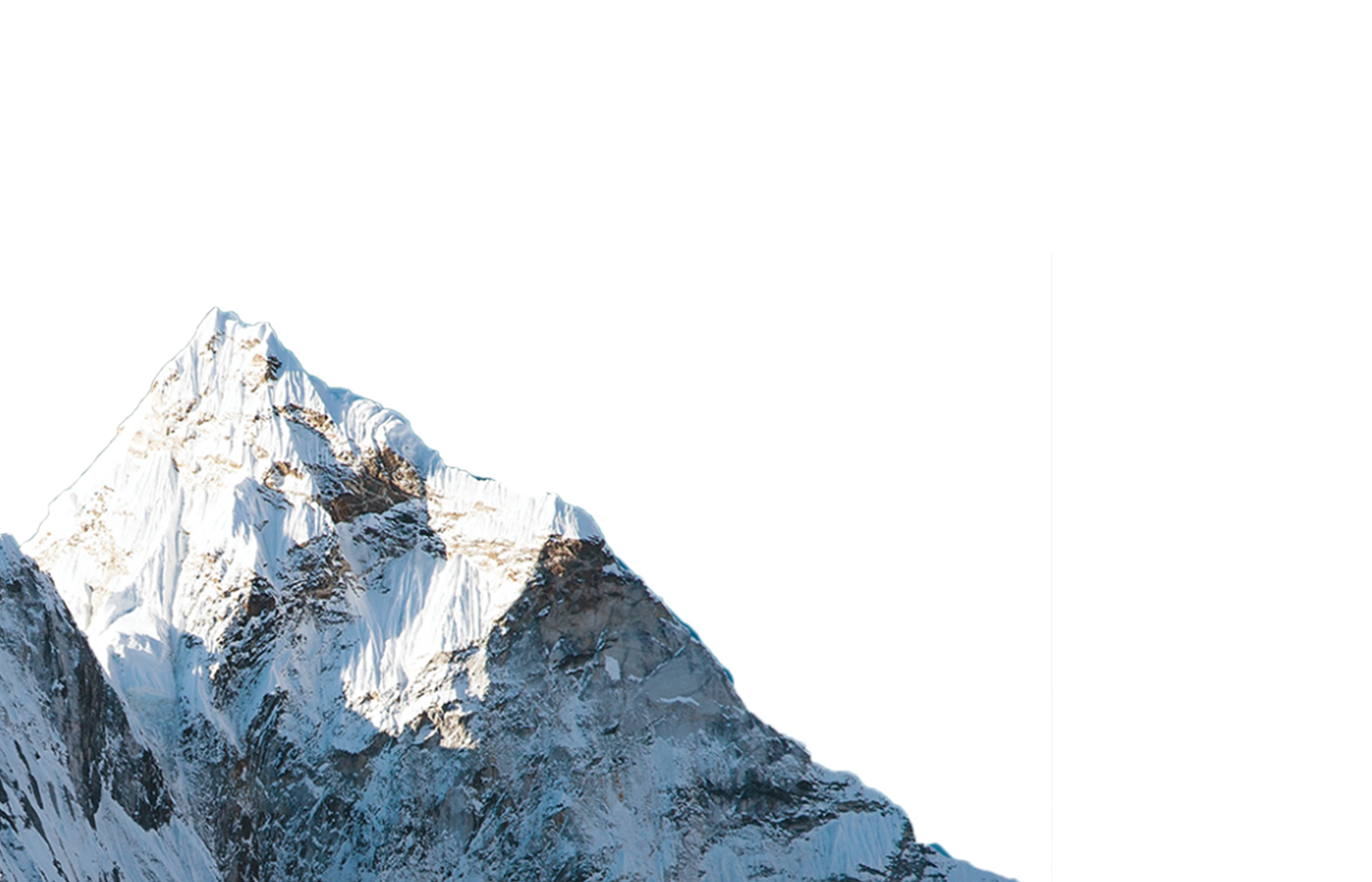
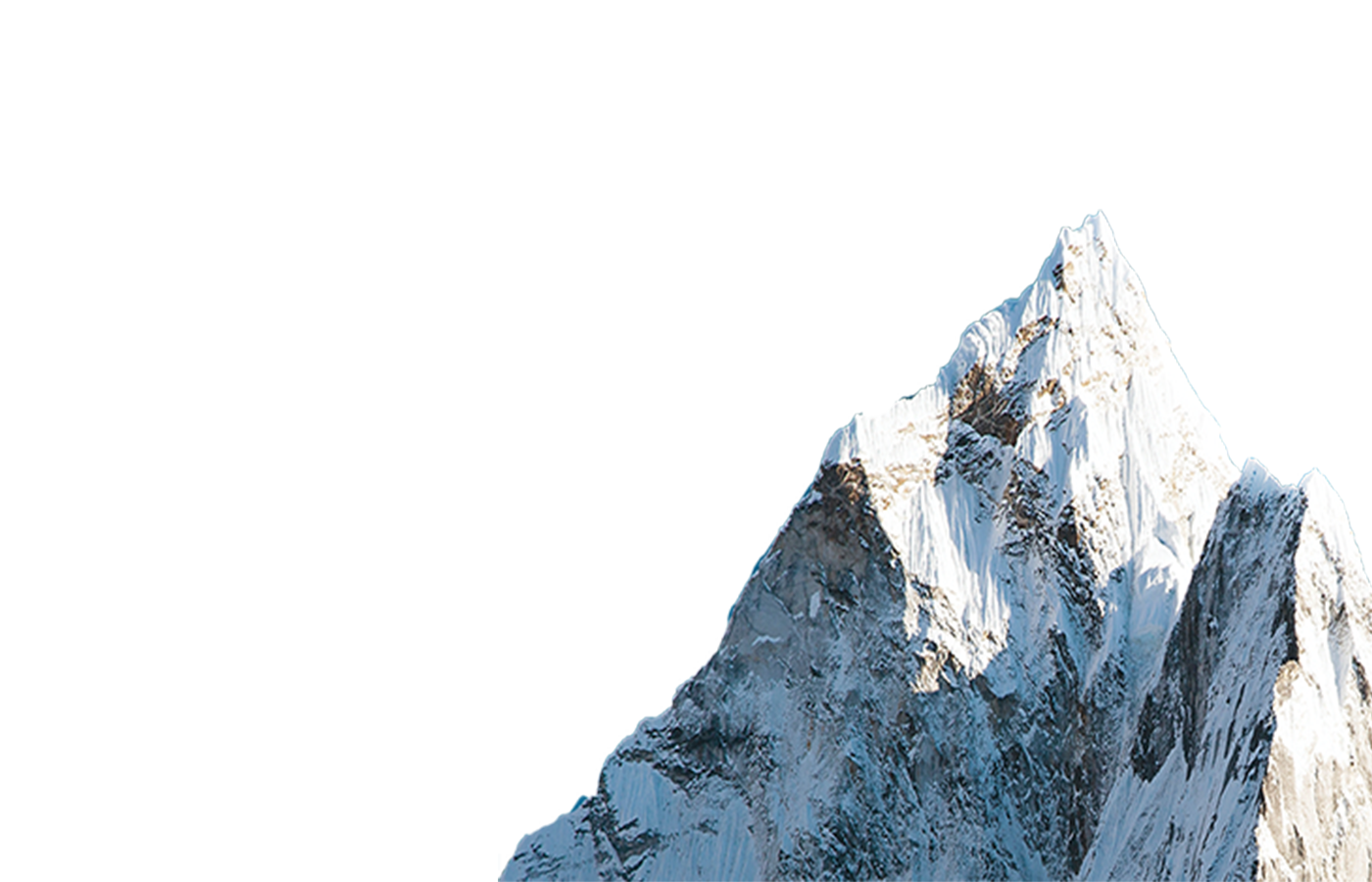

There are two main styles of Mountaineering:
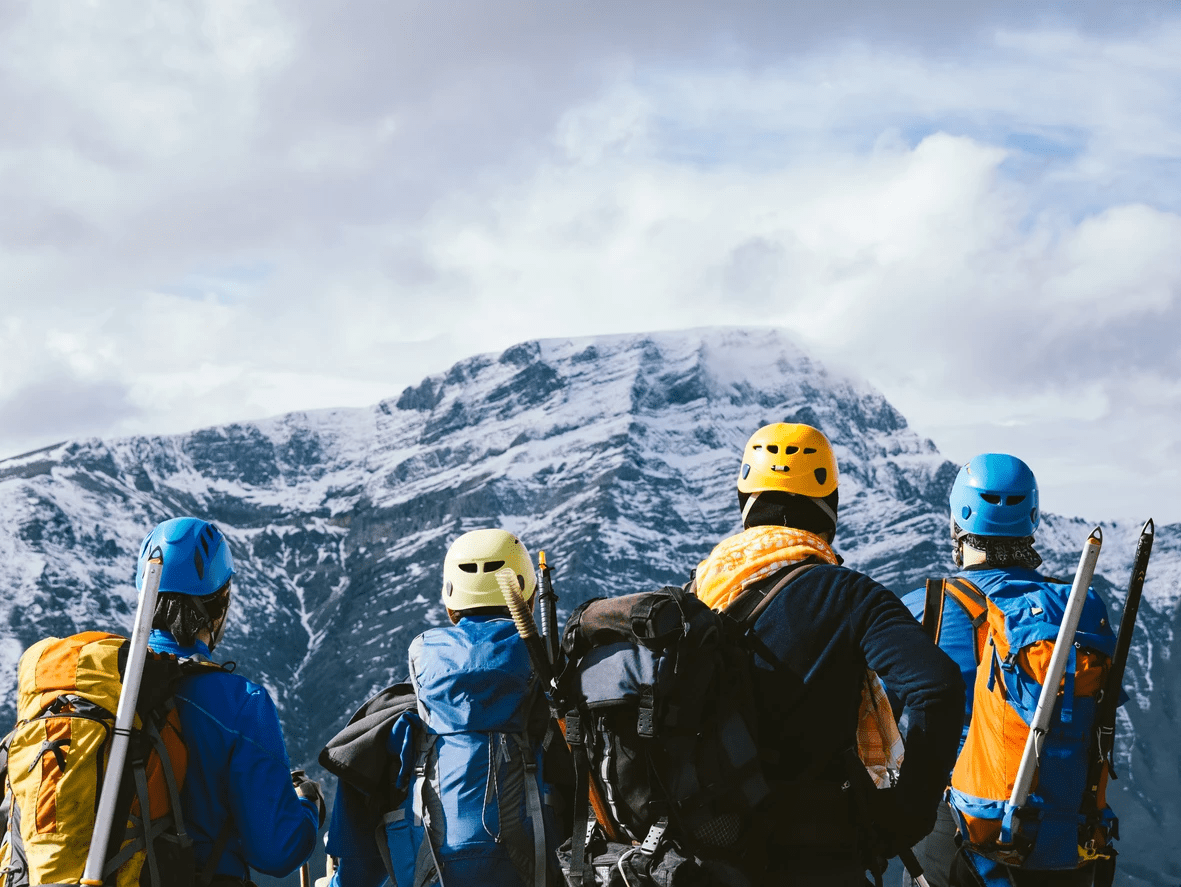
Alpine and
Expedition.
Alpine mountaineering is practiced in medium sized mountains, as opposed to the expedition style's larger mountains.
Alpine mountaineers pack light and move quick and they make a swift push to the peak. This is possible as medium sized mountains, like the Alps or the Rocky Mountains, can be scaled relatively more quickly.
The alternative approach, called Alpine Style, is about using speed and finesse to deftly climb the mountain and get back to base camp before the weather moves in. It involves fewer people, takes much less time, uses less energy and resources, and is generally structurally flat. Alpine Style had its origins as a counter-culture movement responding to what its proponents saw as the impure and cumbersome nature of Expedition Style in the 1970's. Amongst its earliest proponents were a band of British mountaineers led by Chris Bonnington who developed the approach in the European Alps and then transferred it to the Himalayas, and Italian climber Reinhold Messner who took the approach to Everest in 1980, summiting the mountain by himself and without bottled oxygen.
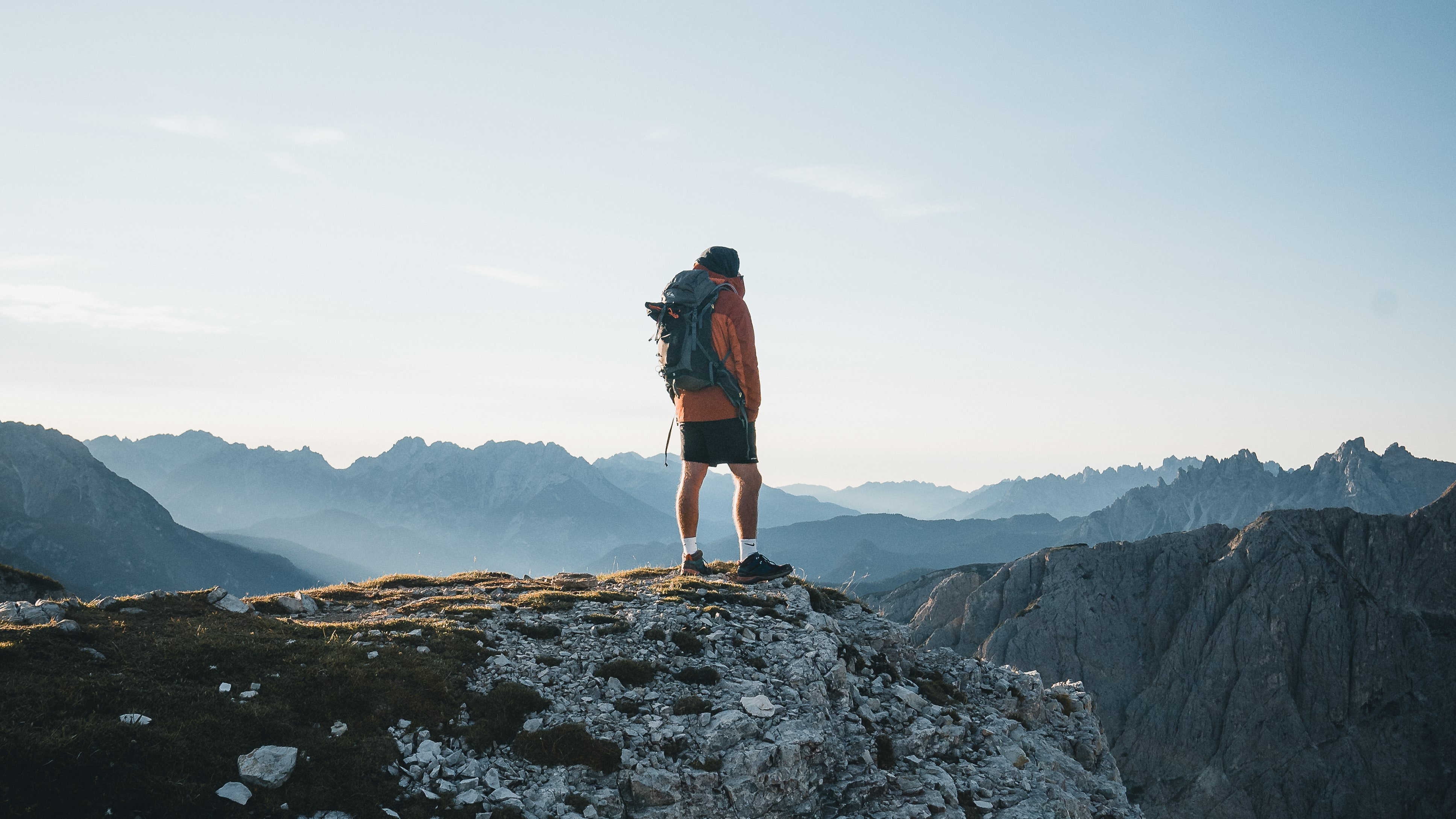
At its core, Alpine Style is all about people letting go of their innate need to control an environment which is naturally chaotic, uncertain and complex, and instead responding according to the natural ebb and flow of changing conditions. Whilst the last thing you would do when climbing Expedition Style is to give in to the elements, it's actually the first thing you do when climbing Alpine Style.
In its most extreme form Alpine Style is an incredibly committed way to climb, as its proponents are arguably more exposed to the mountain's danger than they would be if climbing in Expedition Style. However, the key difference here is that rather than relying on their equipment, as practitioners of Expedition Style do, the Alpine Style practitioner (we'll call them Alpinists) relies upon themselves (it's not that Alpinists don't rely on their equipment, it's just that they are ruthlessly efficient with what they do take and ensure that it has multiple uses). When you watch an Alpinist in action, you are really only seeing the tip of the iceberg - many years and more often than not decades of skill development and apprenticeship lies beneath the surface.
One of the leading Alpinists today is Swiss climber Ueli Steck. More recently he's become renown for his speed ascents, not only in the European Alps but also in the Himalayas. Speed climbing is perhaps best described as Super Alpine Style, and in this video below you can see that it is the antithesis of Expedition Style
Expedition mountaineers, on the other hand, move slow and carry much heavier loads. This is necessitated as these larger mountains, like the Himalayas and the Alaska Range, take weeks or months to climb and as the journey between base camps is much longer. Expeditioners can even travel with pack animals.
The traditional approach to mountaineering is called Expedition Style, and it's all about using sheer force and manpower to forge a way up to the mountain's summit. Also known as "siege style", it uses a series of stocked camps on the mountain and in between these camps are lines of fixed rope, so climbers can move up and down the mountain with greater ease and require a lesser skillset and bank of experience. It involves lots of people, takes a long time, uses a lot of energy and resources, and is generally very hierarchical in nature.
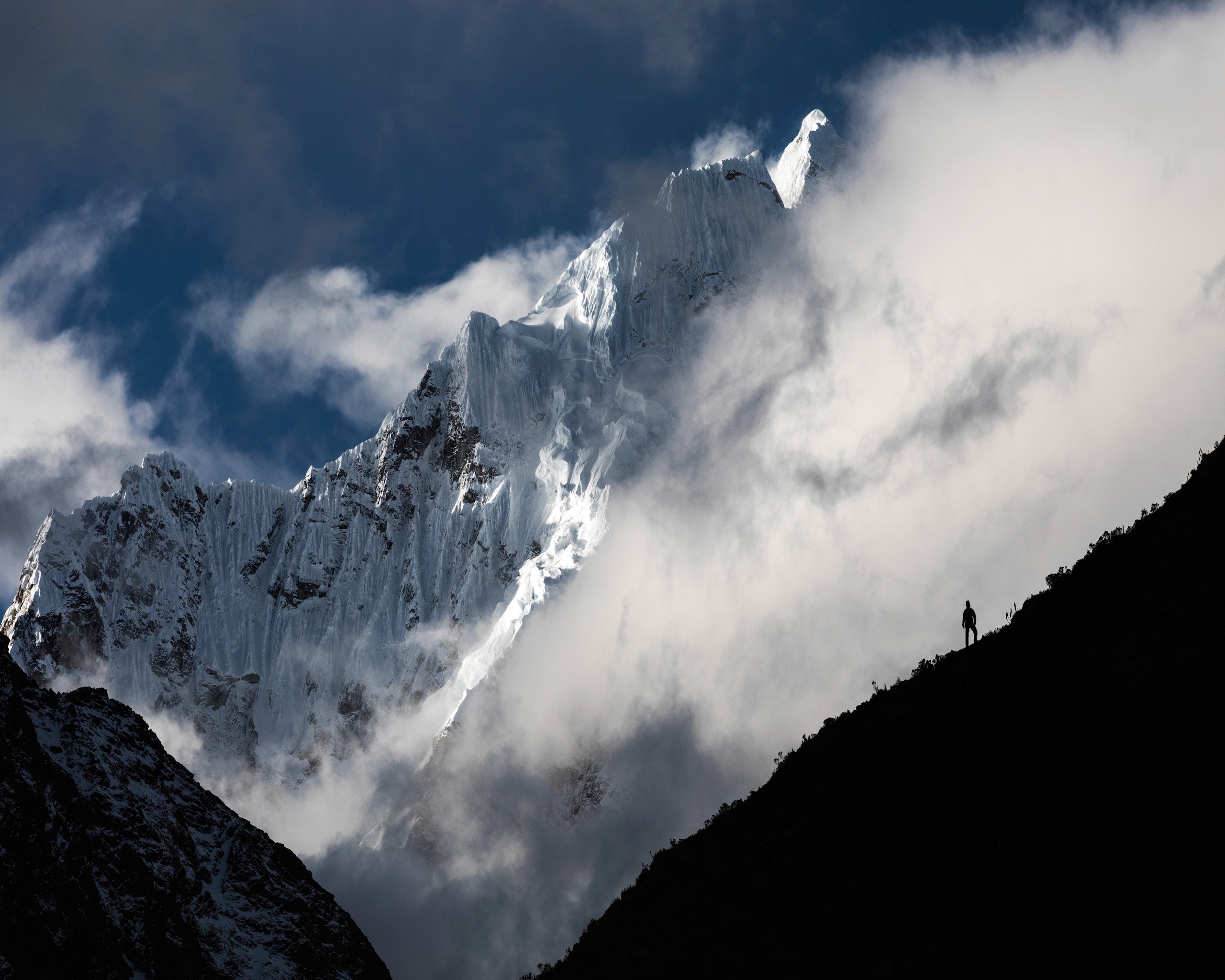
For example, whilst you probably know that Mount Everest was first climbed by Tenzing Norgay and Sir Ed Hillary in 1953, what you may not know is that the expedition was led by a British Army Colonel, 7 camps were placed on the mountain, Tenzing and Ed were the second summit team (3 days earlier the first team of British climbers got to within 100m of the top), the total expedition party comprised approximately 400 people, and that the duration of the expedition was about five months.
At its core, Expedition Style is all about people attempting to control and simplify an environment that is naturally chaotic, uncertain and complex. It's what you most often see nowadays in the Himalayas - invariably it does work on Everest but to be honest it's not really the most fun way to climb, and when things go pear shaped, as they inevitably do in the high mountains, they go pear-shaped in a pretty major way. This is because it is the nature of large human constructs to either break down (because they are too fragile) or to be left behind (because they are too robust) during times of disruption and change.
Arguably, this is how 18 people were killed instantly this year in Everest Base Camp when an earthquake struck, 16 climbers were killed in Everest's Icefall last year, and, as you'll see in a few month's time when the latest Everest movie is released, 8 people were killed above Camp 4 in one night in 1996 (the visuals of the mountain in this preview look incredibly realistic.
Subscribe to our Newsletter for the Latest Updates.
